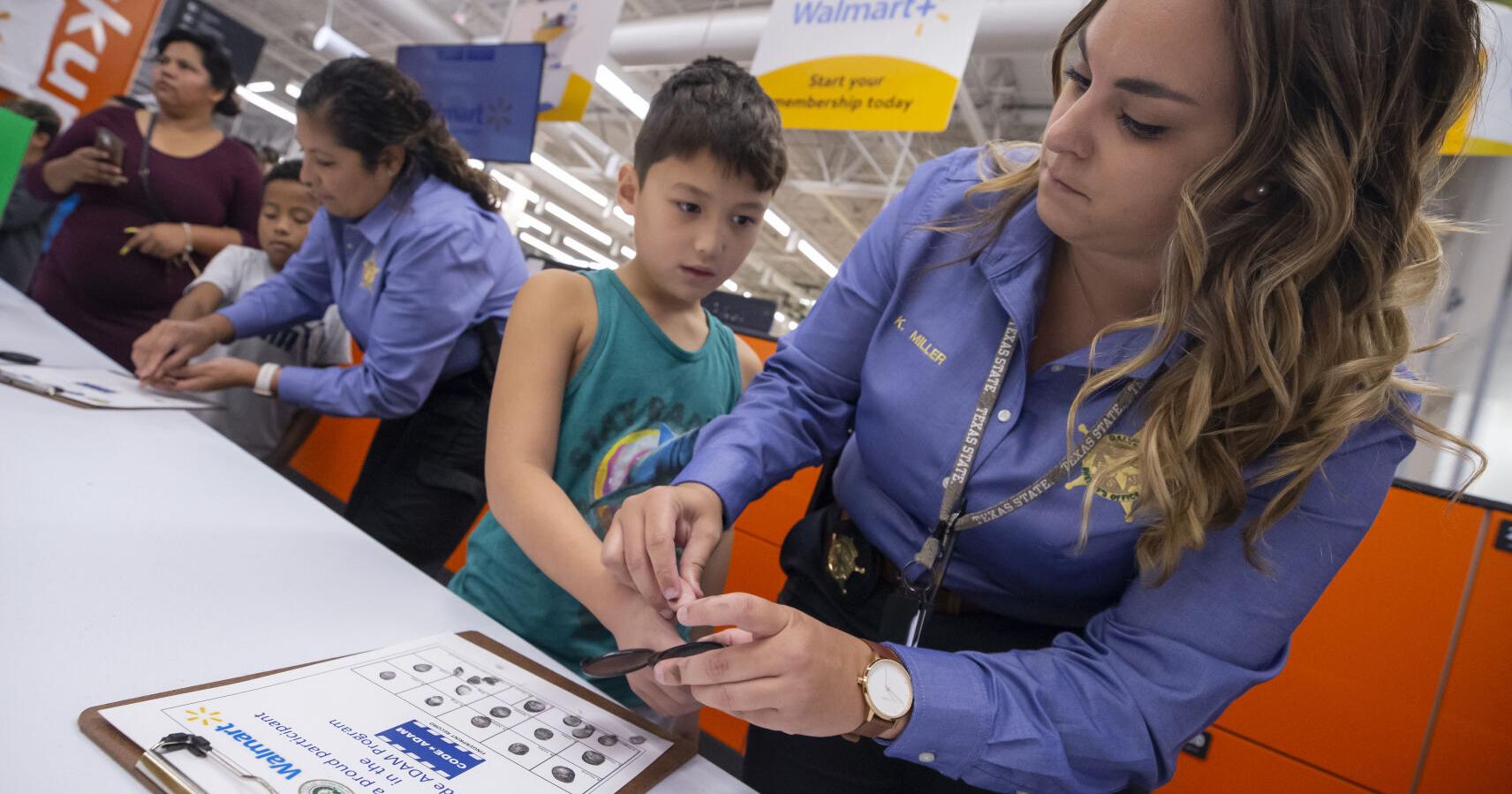Law enforcement officials team up to bring awareness to trafficking | Local News

GALVESTON – The Galveston Police Department, Galveston County Sheriff's Office and the Galveston District Attorney's Office hosted a child trafficking prevention and awareness event Saturday at the Galveston WalMart, 6702 Seawall Blvd.
The purpose of the event was to illuminate the problem of human trafficking of children through education and fun for children. Children were treated to snacks, drinks and coloring books and had the opportunity to get their fingerprints and photos taken.
The law enforcement agencies also provided parents with safety tips to prevent their children from becoming victims.
“This type of event is important to bring awareness to parents and give them information on how to keep their kids safe,” Lt. Kelsey Miller of the Galveston County Sheriff's Office said. “This information, with their child's details and their photo, can help expedite the process of getting information out and setting an Amber alert if necessary.
The fingerprints can help us determine a child's identity or verify where they have been in an investigation.”
Trafficking of children is the second largest criminal enterprise, ahead of arms trafficking and behind drug trafficking, which it's on track to surpass in a few years, according to data from the Child Liberation Foundation. The average age of trafficking victims is 12 years to 14 years, with children as young as three-years-old being found.
“The most common ages of children involved in trafficking locally is 11 to 16 years old,” said detective Michelle Sollenberger, of the Galveston Police Department. “It's important that parents know where their kids are going and get to know the parents of their kid's friends.”
The most common way traffickers get access to children is through the internet, specifically Facebook and Instagram, which saw a 120 percent increase in recruitment in 2020, according to the Polaris Project.
“Social media has certainly contributed to this problem,” Sollenberger said. “Kids do not know how to keep their pages private and this makes them vulnerable to traffickers.
“Traffickers pose as people the age of the children and kids sometimes exchange photos, which the traffickers can use to exploit them. It is important that parents monitor their kid's social media use and know who they are communicating with.”
The nonprofit also identified 10,583 situations of trafficking in 2020, with 16,658 victims identified. Nearly 70 percent of these were related to sex trafficking. In total, 1.2 million children are trafficked each year in the United States, with a total of 5.5 million total victims, the foundation found.
“Galveston is a tourist area and that makes children vulnerable and they can be taken to Houston for exploitation,” Miller said.
Texas was also found the be the state with the second highest number of annual victims, behind California.
The National Human Trafficking Hotline is 1-888-373-7888, with a text line – 2337333.
This “Eyes on Trafficking” story is reprinted from its original online location.
 ABOUT PBJ LEARNING
ABOUT PBJ LEARNING
PBJ Learning is a leading provider of online human trafficking training, focusing on awareness and prevention education. Their interactive Human Trafficking Essentials online course is used worldwide to educate professionals and individuals how to recognize human trafficking and how to respond to potential victims. Learn on any web browser (even your mobile phone) at any time.
More stories like this can be found in your PBJ Learning Knowledge Vault.
EYES ON TRAFFICKING
This “Eyes on Trafficking” story is reprinted from its original online location.
ABOUT PBJ LEARNING
PBJ Learning is a leading provider of online human trafficking training, focusing on awareness and prevention education. Their interactive Human Trafficking Essentials online course is used worldwide to educate professionals and individuals how to recognize human trafficking and how to respond to potential victims. Learn on any web browser (even your mobile phone) at any time.
More stories like this can be found in your PBJ Learning Knowledge Vault.
